The Emergent Nature of Networked Sustainable Procurement
Abstract
1. Introduction
2. Literature Review
2.1. Two Alternative Conceptual Models of Sustainable Production
2.2. Towards a Model of Sustainable Procurement
3. Research Method
4. Case Presentation
4.1. PEG: The Upstream Supply Chain
“According to the current legislation, oil companies have to involve local suppliers in their operations. Depending on the capacity availability of locally procured services it is required 10%, 20% or 30%, even up to 100% local participation. The legislation on the promotion of local participation contributes to ensuring the direct benefit of oil resources by the local communities and citizens in Ghana. There was no cause to apply sanctions for the non-compliance with the local content law because major companies partnered the government in the achievement of the benefit”.
“We seek to benefit the local communities where we develop our operations by investing in local suppliers, their skills and by creating opportunities within the oil and gas industry. Compliance with the Law of local content is not only a legislative norm for us. We do it because we would like to take this social responsibility that creates in turn positive social and economic effects. It also makes good business sense because collaboration with local companies can reduce our project time and costs”.
“When formulating internal procurement policies, we have to take into consideration local regulations and laws. At the same time, many different actors like the government, local communities, environmental activists, suppliers, etc. are involved in oil discovery and exploration processes. These actors produce various so-called social expectations that are able to affect the oil exploration activities and making it more sustainable. We try to manage them by using different procurement tools, including corporate social responsibility as the most reliable way for us”.
“We are a private organization that aims at ensuring profitability and returns on stakeholder investments. We also have to be compliant with the laws, regulations, social expectations and ethical norms. Once we achieve these major concerns, our company can be sure of gaining a positive corporate image and reputation, ensuring environmental and community preservation, operation continuity and ultimately being accountable to all stakeholder interests”.
“We seek to eliminate any barriers that may hinder the participation of local suppliers. It is common when small-scale suppliers have a potential and technical capacity to meet the requirement but need support in the form of employee training programs on “how to do business with the organization”.
“We pay particular attention to the selection of suppliers based on their competence and key performance indicators that show how effectively suppliers achieve their key business objectives. How much our suppliers are specialized and professional affects product cost, product efficiency, environmental impact, etc. So we require from suppliers international certifications like SA 800 (social), ISO 14,001 (environment), ISO 9001 (quality)”.
“All we need to do is to be the most competitive in the local market to win contracts. Now it is easier for local suppliers in comparison with foreign service-providers. Catering and hospitality have been solely reserved for the local supplier market in Ghana. The preference for other services has to be deserved based on the level of competence and service quality of local suppliers”.
4.2. GOR: The Downstream Supply Chain
“Our company has been always guided by legislation to protect the public purse. Actually, the dominance of value for money, supported by laws, has been a driver towards sustainable procurement. There are no specific norms and regulations to support the social aspect of sustainable procurement and the participation issues of local suppliers, unlike the upstream sector. This is only the internal responsibility of our PEGs a purchasing organization. The issue of local community development is therefore driven by purchasing organizations’ internal organizational culture and top management orientation”.
“We do not discriminate suppliers by their location of ownership. We do not, therefore, develop an explicit policy on local supplier engagement in our procurement activities. Local supply is only prioritized when delivery time is of the essence”.
“We have to take into the environmental effects of our purchases. The procurement of technical and complicated products is fulfilled by a project team with the support of other departments like the user department and the engineering department. This allows ensuring product purchasing based not only on achieving value for money but also on meeting environmental standards”.
“We view value for money as a product that is fit for the purpose (effective), efficient (provide better and improved service) and economical lowest whole life cost). The terms of supply should be favourable as well”.
5. Analysis and Discussion
6. Conclusions
Author Contributions
Funding
Data Availability Statement
Conflicts of Interest
References
- Janusz, A.; Bednarek, A.; Komarowski, L.; Boniecki, P.; Engelseth, P. Networked interdependencies and interaction in a biotechnology research project. IMP J. 2018, 12, 460–482. [Google Scholar] [CrossRef]
- Walker, H.; Phillips, W. Sustainable procurement: Emerging issues. Int. J. Procure. Manag. 2009, 2, 41. [Google Scholar] [CrossRef]
- Seuring, S.; Müller, P.D.M. From a literature review to a conceptual framework for sustainable supply chain management. J. Clean. Prod. 2008, 16, 1699–1710. [Google Scholar] [CrossRef]
- Gold, S.; Seuring, S.; Beske, P. Sustainable supply chain management and inter-organizational recources: A literature review. Corp. Soc. Responsib. Environ. Manag. 2010, 17, 230–245. [Google Scholar]
- Walker, H.; Miemczyk, J.; Johnsen, T.; Spencer, R. Sustainable procurement: Past, present and future. J. Purch. Supply Manag. 2012, 18, 201–206. [Google Scholar] [CrossRef]
- Hoejmose, S.U.; Adrien-Kirby, A.J. Socially and environmentally responsible procurement: A literature review and future research agenda of a managerial issue in the 21st century. J. Purch. Supply Manag. 2012, 18, 232–242. [Google Scholar] [CrossRef]
- Cheng, W.; Appolloni, A.; D’Amato, A.; Zhu, Q. Green Public Procurement, Missing Concepts and Future Trends—A Critical Review. J. Clean. Prod. 2018, 176, 770–784. [Google Scholar] [CrossRef]
- Appolloni, A.; D’Amato, A.; Cheng, W. Is Public Procurement Going Green? Experiences and Open Issues. In The Applied Law and Economics of Public Procurement. The Economics of Legal Relationships; Piga, G., Treumer, S., Eds.; Routledge: London UK, 2012; ISBN 978-0-415-62216-5. [Google Scholar]
- Ma, Y.; Liu, Y.; Appolloni, A.; Liu, J. Does green public procurement encourage firm’s environmental certification practice? The mediation role of top management support. Corp. Soc. Responsib. Environ. Manag. 2020. Early cite. Available online: https://onlinelibrary.wiley.com/doi/abs/10.1002/csr.2101 (accessed on 24 December 2020).
- Johnsen, T.E.; Miemczyk, J.; Howard, M. A systematic literature review of sustainable purchasing and supply research: Theoretical perspectives and opportunities for IMP-based research. Ind. Mark. Manag. 2017, 61, 130–143. [Google Scholar] [CrossRef]
- Hoejmose, S.U.; Roehrich, J.K.; Grosvold, J. Is doing more doing better? The relationship between responsible supply chain management and corporate reputation. Ind. Mark. Manag. 2014, 43, 77–90. [Google Scholar] [CrossRef]
- Barron, L.; Gauntlett, E. The Regional Institute Online Publishing 2002. Available online: http://www.regional.org.au/au/soc/2002/4/barron_gauntlett.htm (accessed on 19 July 2017).
- Lozano, F.J. Envisioning sustainability three-dimensionally. J. Clean. Prod. 2008, 16, 1838–1846. [Google Scholar] [CrossRef]
- Thompson, J.D. Organizations in Action; McGraw Hill: New York, NY, USA, 1967. [Google Scholar]
- Harrison, D.; Easton, G. Patterns of actor response to environmental change. J. Bus. Res. 2002, 55, 545–552. [Google Scholar] [CrossRef]
- Öberg, C.; Huge-Brodin, M.; Björklund, M. Applying a network level in environmental impact assessments. J. Bus. Res. 2012, 65, 247–255. [Google Scholar] [CrossRef]
- Álvarez, M.E.P.; Bárcena, M.M.; González, F.A. On the sustainability of machining processes. Proposal for a unified framework through the triple bottom-line from an understanding review. J. Clean. Prod. 2017, 142, 3890–3904. [Google Scholar] [CrossRef]
- Cabezas, H.; Pawlowski, C.W.; Mayer, A.L.; Hoagland, N.T. Sustainability: Ecological, social, economic, technological, and systems perspectives. Clean Technol. Environ. Policy 2003, 5, 167–180. [Google Scholar] [CrossRef]
- Mayer, A.L.; Thurton, H.W.; Pawlowski, C.W. The multidisciplinary influence of common sustainability indices. Front. Ecol. Environ. 2004, 2, 419–426. [Google Scholar] [CrossRef]
- Mayer, A.L. Strengths and weaknesses of common sustainability indices for multidimensional systems. Environ. Int. 2008, 34, 277–291. [Google Scholar] [CrossRef]
- Singh, R.K.; Murty, H.; Gupta, S.; Dikshit, A. An overview of sustainability assessment methodologies. Ecol. Indic. 2009, 9, 189–212. [Google Scholar] [CrossRef]
- Elkington, J. Partnerships from cannibals with forks: The triple bottom line of 21st-century business. Environ. Qual. Manag. 1998, 8, 37–51. [Google Scholar] [CrossRef]
- Birkin, F.; Polesie, T.; Lewis, L. A new business model for sustainable development: An exploratory study using the theory of constraints in Nordic organizations. Bus. Strat. Environ. 2009, 18, 277–290. [Google Scholar] [CrossRef]
- Green, K.; Morton, B.; New, S. Purchasing and environmental management: Interactions, policies and opportunities. Bus. Strat. Environ. 1996, 5, 188–197. [Google Scholar] [CrossRef]
- Veleva, V.; Hart, M.; Greiner, T.; Crumbley, C. Indicators for measuring environmental sustainability: A case study of the pharmaceutical industry. Benchmarking 2003, 10, 107–119. [Google Scholar] [CrossRef]
- Thatcher, A. Theoretical definitions and models of sustainable development that apply to human factors and ergonomics. In Proceedings of the 11th International Symposium on Human Factors in Organisational Design and Management & 46th Annual Nordic Ergonomics Society Conference, Copenhagen, Denmark, 17–20 August 2014; IEA Press: Copenhagen, Denmark, 2014; pp. 747–752. [Google Scholar]
- Dyllick, T.; Hockerts, K. Beyond the business case for corporate sustainability. Bus. Strategy Environ. 2002, 11, 130–141. [Google Scholar] [CrossRef]
- Birkin, F.; Cashman, A.; Koh, S.C.L.; Liu, Z. New sustainable business models in China. Bus. Strat. Environ. 2009, 18, 64–77. [Google Scholar] [CrossRef]
- Krause, D.R.; Vachon, S.; Klassen, R.D. Special topic forum on sustainable supply chain management: Introduction and reflections on the role of purchasing management. J. Supply Chain Manag. 2009, 45, 18–25. [Google Scholar] [CrossRef]
- Carter, C.R.; Rogers, D.S. A framework of sustainable supply chain management: Moving toward new theory. Int. J. Phys. Distrib. Logist. Manag. 2008, 38, 360–387. [Google Scholar] [CrossRef]
- Closs, D.; Speier, C.; Meacham, N. Sustainability to support end-to-end value chains: The role of supply chain management. J. Acad. Mark. Sci. 2011, 39, 101–116. [Google Scholar] [CrossRef]
- Fiorino, D.J. Sustainability as a Conceptual Focus for Public Administration. Public Adm. Rev. 2010, 70, s78–s88. [Google Scholar] [CrossRef]
- Bai, C.; Sarkis, J. Integrating sustainability into supplier selection with grey system and rough set methodologies. Int. J. Prod. Econ. 2010, 124, 252–264. [Google Scholar] [CrossRef]
- Håkansson, H.; Johanson, J. The network governance structure: Interfirm cooperation beyond markets and hierarchy. In The Embedded Firm; Grabher, G., Ed.; Routledge: London, UK, 1993. [Google Scholar]
- Cantu, C.L.; Corsaro, D.; Snehota, I. Roles of actors in combining resources into complex solutions. J. Bus. Res. 2012, 65, 139–150. [Google Scholar] [CrossRef]
- Pettigrew, A.M. What is processual analysis? Scandinavian. J. Manag. 1997, 13, 337–348. [Google Scholar]
- Van De Ven, A.H. Suggestions for studying strategy process: A research note. Strat. Manag. J. 1992, 13, 169–188. [Google Scholar] [CrossRef]
- Halinen, A.; Medlin, C.J.; Törnroos, J.-Å. Time and process in business network research. Ind. Mark. Manag. 2012, 41, 215–223. [Google Scholar] [CrossRef]
- Emerson, R.M. Power-Dependence Relations. Am. Sociol. Rev. 2006, 27, 31. [Google Scholar] [CrossRef]
- Håkansson, H.; Snehota, I. Developing Relationships in Business Networks; Routledge: London, UK, 1995. [Google Scholar]
- Håkansson, H.; Persson, G. Supply Chain Management: The Logic of Supply Chains and Networks. Int. J. Logist. Manag. 2004, 15, 11–26. [Google Scholar] [CrossRef]
- Parsons, T. Structure and Processes in Modern Society; Free Press of Glencoe: New York, NY, USA, 1960. [Google Scholar]
- Ford, D.; Mattson, L.-G.; Snehota, I. Management in the Interactive Business World. In No Business is an Island; Håkansson, H., Snehota, I., Eds.; Emerald Publishing: Bingley, UK, 2017. [Google Scholar]
- Halldorsson, A.; Kotzab, H.; Skjott-Larsen, T. Inter-organizational theories behind Supply Chain Management—Discussion and applications. In Strategy and Organization in Supply Chains; Seuring, S., Müller, M., Goldbach, M., Schneidewind, U., Eds.; Physica Verlag: Berlin, Germany, 2003. [Google Scholar]
- Gadde, L.-E.; Håkansson, H.; Persson, G. Supply Network Strategies; Wiley: Chichester, UK, 2010. [Google Scholar]
- Voss, C.; Tsikriktsis, N.; Frohlich, M. Case research in operations management. Int. J. Oper. Prod. Manag. 2002, 22, 195–219. [Google Scholar] [CrossRef]
- Bryman, A.; Bell, E. Business Research Methods; Oxford University Press: Oxford, UK, 2015. [Google Scholar]
- Gabriel, Y.; Griffiths, D.S. Stories in Organizational Research. In Essential Guide to Qualitative Methods and Analysis in Organizational Researc; Cassell, C., Symon, G., Eds.; Sage: London, UK, 2004. [Google Scholar]
- Gabriel, Y. Storytelling in Organizations: Facts, Fictions Fantasies; Oxford University Press: Oxford, UK, 2000. [Google Scholar]
- Shou, Y.; Shao, J.; Lai, K.; Kang, M.; Park, Y.W. The impact of sustainability and operations orientations on sustainable supply management and the triple bottom line. J. Clean. Prod. 2019, 240, 118280. [Google Scholar] [CrossRef]
- Weick, K.E.; Sutcliffe, K.M.; Obstfeld, D. Organizing and the Process of Sensemaking. Organ. Sci. 2005, 16, 409–421. [Google Scholar] [CrossRef]
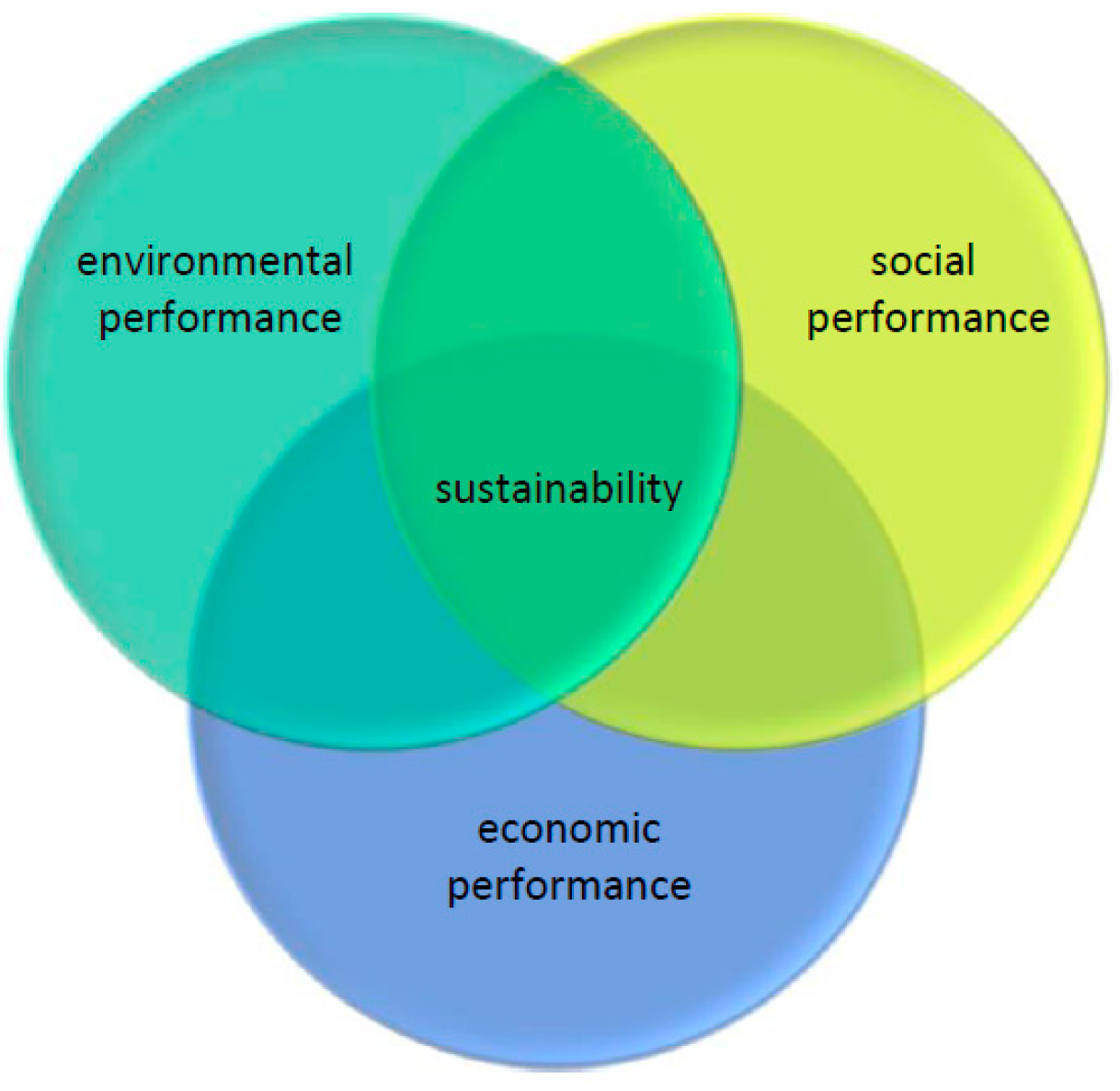
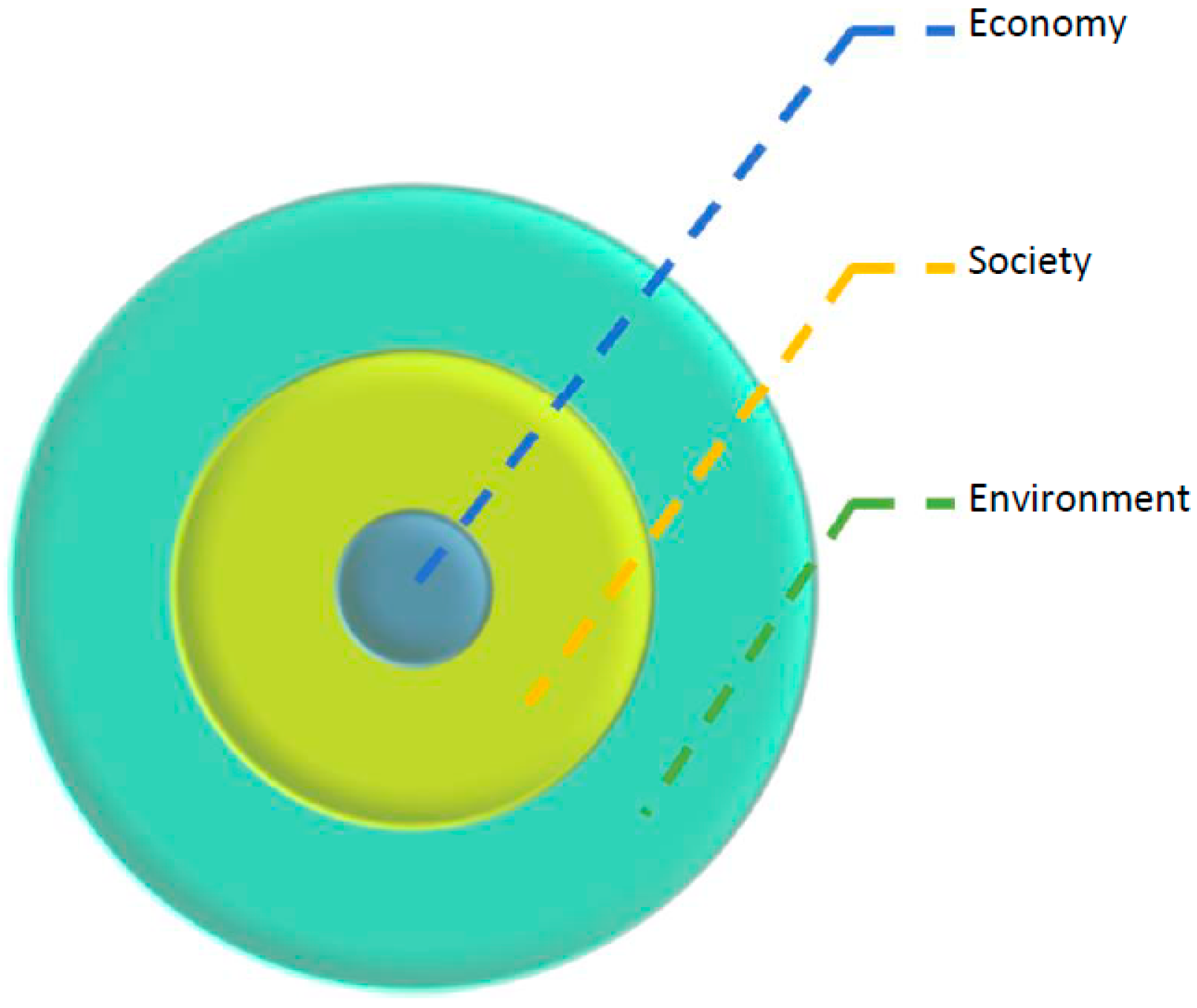
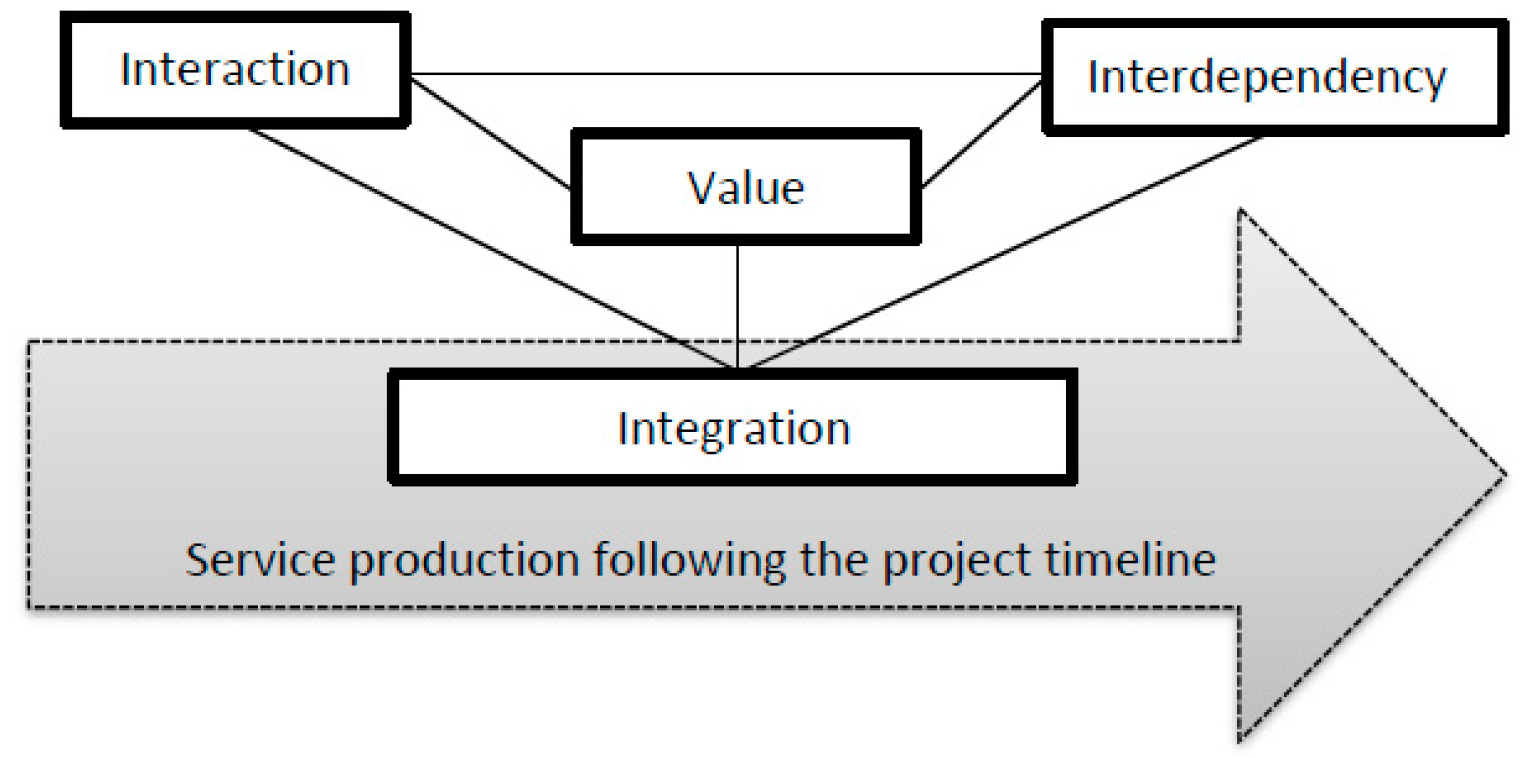
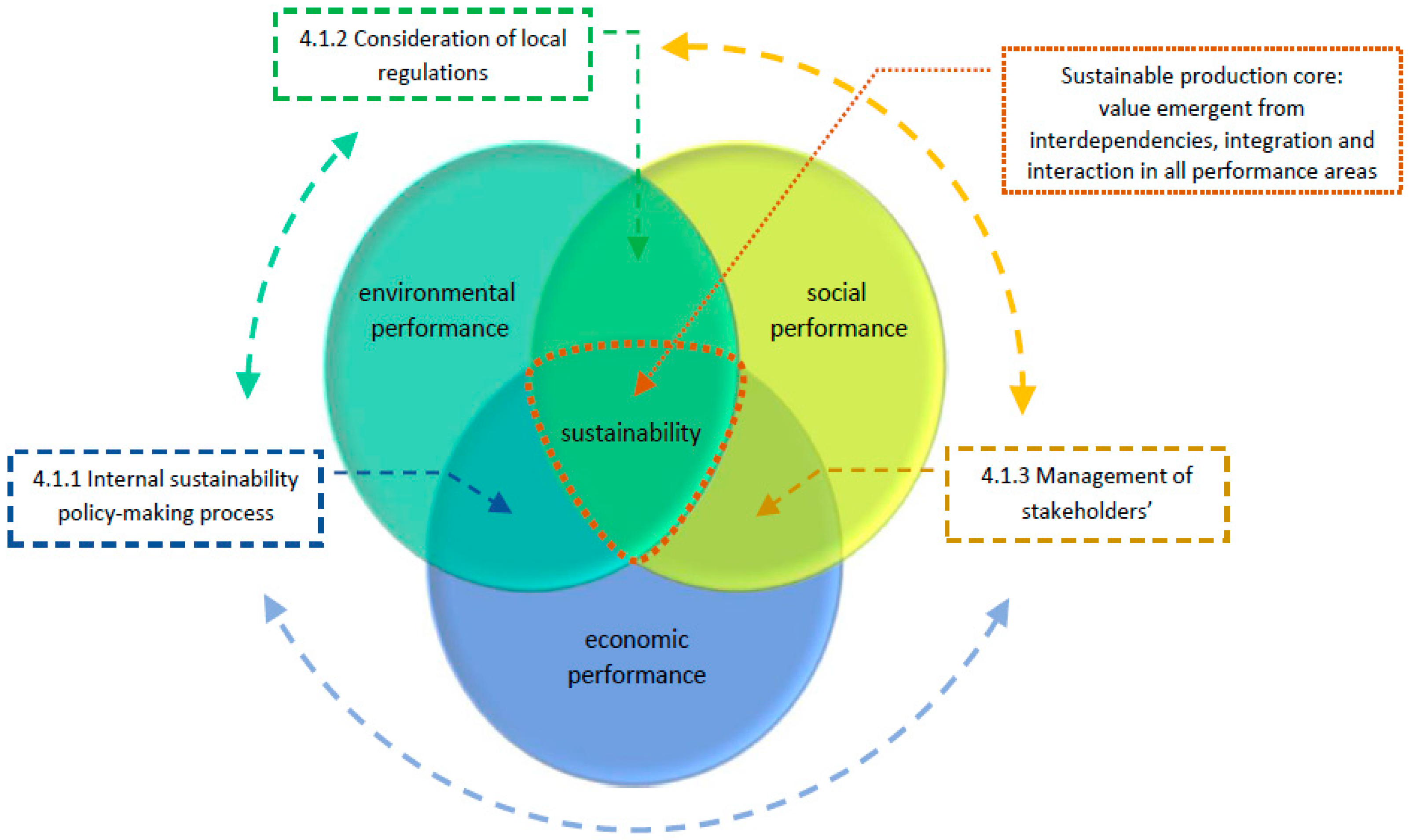
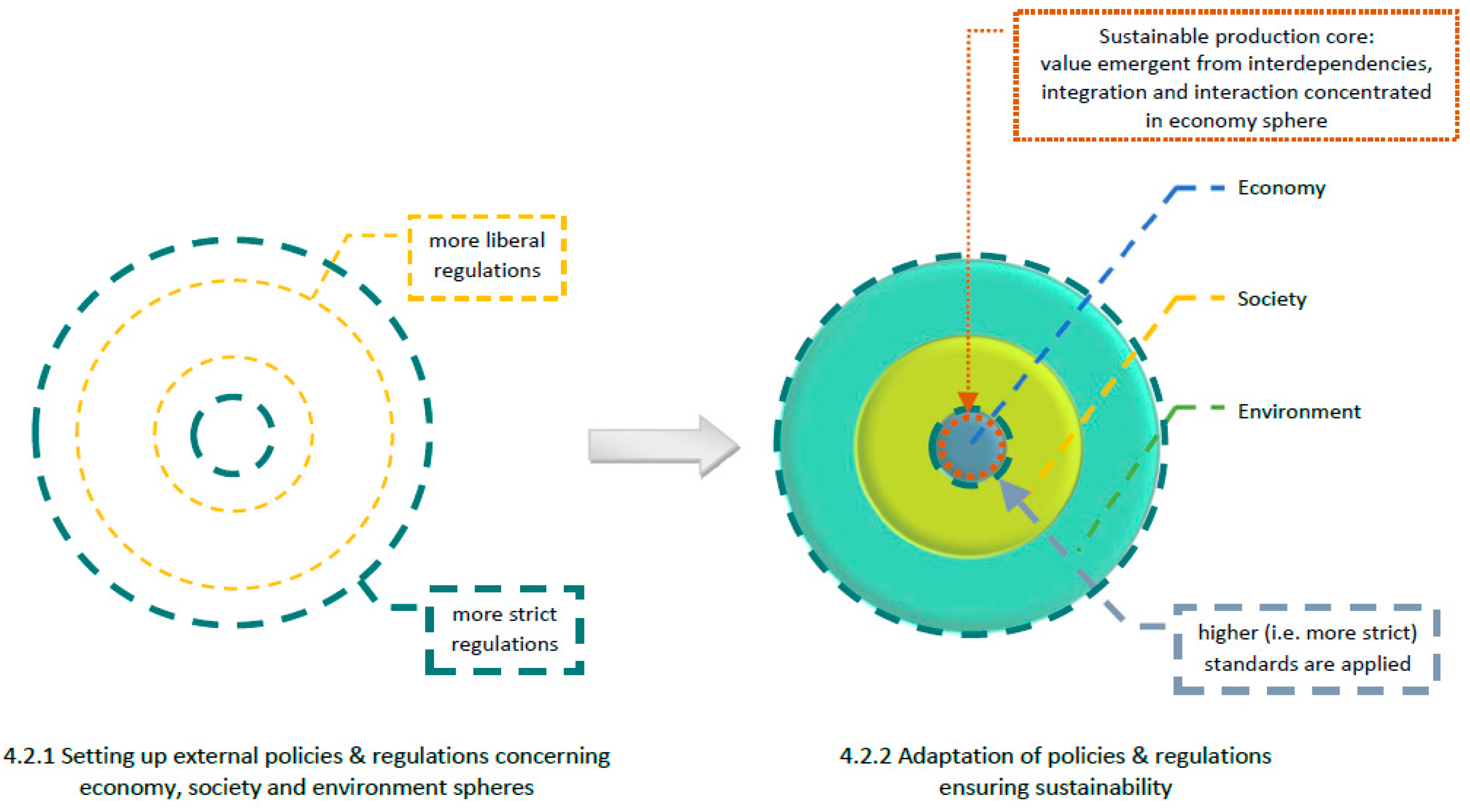
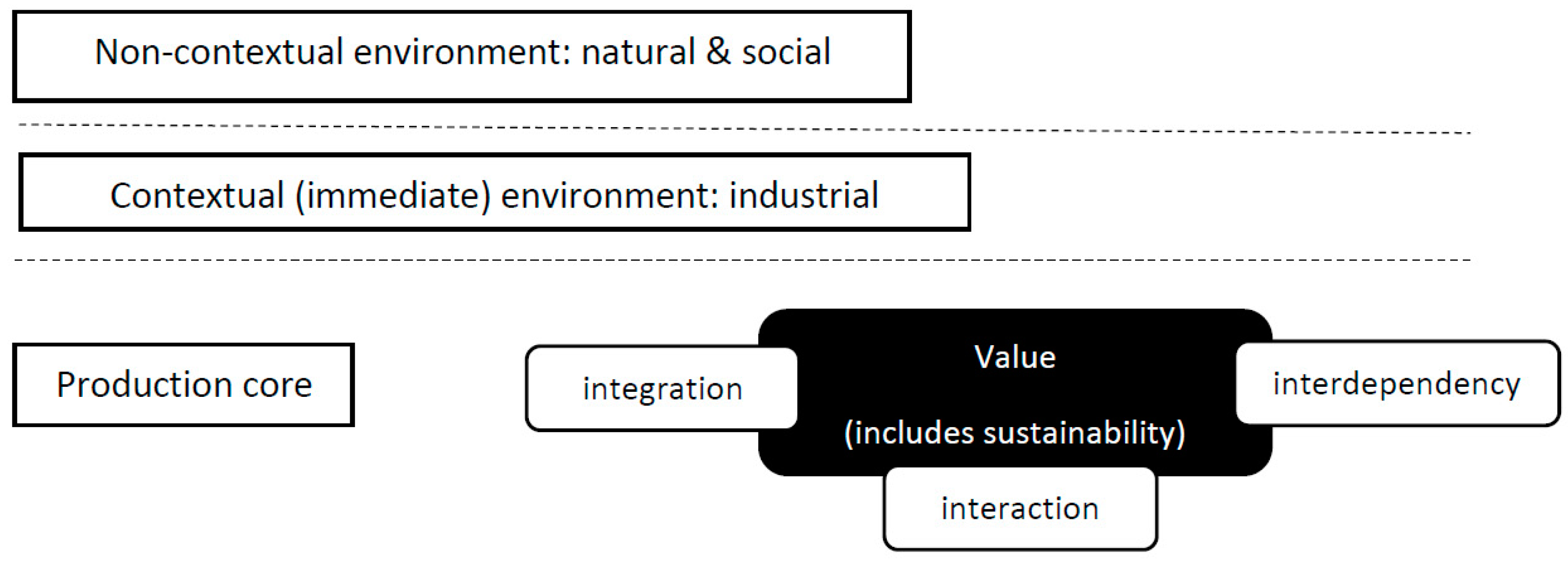
| Upstream Spheres | Interview | Organization/Supplier | Organisation/Supplier Description | Date 2017 | Department/Position |
| Case study (economy & economic performance) | I-1 | Petrol Explore Ghana (PEG) | 13 July | Procurement Officer | |
| I-2 | Upstream sector Oil and Gas Exploration and operation | 30 Aug. | Procurement Officer | ||
| Suppliers (society & social performance) | I-5 | Supplier 1 | Oil and hazardous waste management company | 02 Aug. | Operations |
| I-6 | Supplier 2 | Freight forwarding and logistics | 16 Aug. | Logistics | |
| I-7 | Supplier 3 | Offshore management and consulting company. | 18 Aug. | Marketing | |
| I-8 | Supplier 4 | Offshore drilling and engineering service | 11 Aug. | Logistics | |
| I-12 | Petroleum Commission | Regulate and manage the utilisation of petroleum resources and, coordinate policies in the upstream | 27 July | Local Content Team | |
| Regulators (environment & environmental performance) | I-13 | Environmental Protection Agency | Public body for protecting and improving the environment in Ghana. | 19 July | Petroleum Department |
| Downstream Spheres | Interview | Organization | Date 2017 | Department/Position | |
| Case study (economy & economic performance) | I-3 | Ghana Oil Refinery | 06 July | Senior Purchasing Officer | |
| I-4 | Downstream sector and Gas and Oil Refinery (GOR) | 23 Aug. | Principal Purchasing Officer | ||
| Suppliers (society & social performance) | I- 9 | Supplier 5 | A leading provider of industrial products, technical services and innovative solutions to industries | 04 Feb. | Materials Manager |
| I-10 | Supplier 6 | Engineering and steel construction and supply services | 10 Aug. | General Manager | |
| I-11 | Supplier 7 | Machine shop for the local oil and energy sector, industrial equipment, building facilities, refinery plant. | 09 Aug. | Warehouse Manager | |
| Regulators (environment & environmental performance) | I-14 | National Petroleum Authority | Regulate the petroleum downstream to ensure efficient, profitable, fair operations and value for money to the customer. | 25 Aug. | Licensing Officer |
| I-15 | Environmental Protection Agency | Public body for protecting and improving the environment in Ghana. | 19 July | Petroleum Department |
| Upstream Spheres | Downstream Spheres | |
|---|---|---|
| Ownership | private | public |
| Range of operations | global | domestic |
| Roots for sustainability policies | networked/enacted | legal acts/regulations |
| Sustainability responsiveness | pro-active | reactive |
| Awareness of sustainability issues | explicit | implied |
| Sustainability governance structures | unified, bi- or tri-lateral governance | market governance |
Publisher’s Note: MDPI stays neutral with regard to jurisdictional claims in published maps and institutional affiliations. |
© 2020 by the authors. Licensee MDPI, Basel, Switzerland. This article is an open access article distributed under the terms and conditions of the Creative Commons Attribution (CC BY) license (http://creativecommons.org/licenses/by/4.0/).
Share and Cite
Engelseth, P.; Glavee-Geo, R.; Janusz, A.; Niboi, E. The Emergent Nature of Networked Sustainable Procurement. Sustainability 2021, 13, 134. https://doi.org/10.3390/su13010134
Engelseth P, Glavee-Geo R, Janusz A, Niboi E. The Emergent Nature of Networked Sustainable Procurement. Sustainability. 2021; 13(1):134. https://doi.org/10.3390/su13010134
Chicago/Turabian StyleEngelseth, Per, Richard Glavee-Geo, Artur Janusz, and Enoch Niboi. 2021. "The Emergent Nature of Networked Sustainable Procurement" Sustainability 13, no. 1: 134. https://doi.org/10.3390/su13010134
APA StyleEngelseth, P., Glavee-Geo, R., Janusz, A., & Niboi, E. (2021). The Emergent Nature of Networked Sustainable Procurement. Sustainability, 13(1), 134. https://doi.org/10.3390/su13010134






